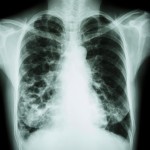 Dr. Claudia I. Henschke, MD, PhD, the Director of the Lung Screening Program and clinical professor of radiology at Mount Sinai Hospital, and her team of collaborating investigators, recently published an important study that could have significant impacts on future screening recommendations for Lung Cancer. The study entitled “CT screening for lung cancer: Importance of emphysema for never smokers and smokers” was published in the February online edition of Lung Cancer.
Dr. Claudia I. Henschke, MD, PhD, the Director of the Lung Screening Program and clinical professor of radiology at Mount Sinai Hospital, and her team of collaborating investigators, recently published an important study that could have significant impacts on future screening recommendations for Lung Cancer. The study entitled “CT screening for lung cancer: Importance of emphysema for never smokers and smokers” was published in the February online edition of Lung Cancer.
Background Terminology:
- Emphysema: A type of chronic obstructive pulmonary disease (COPD) that gradually damages the air sacs (alveoli) in patients’ lungs, making it progressively harder to take deep breaths and engage in physical activity.
- CT scans: Computerized tomography scans combine X-ray views taken from many different angles and computer processing to create diagnostic images of patients’ bones and soft tissue.
- Odds Ratio: A measure of association between an exposure and an outcome.
In this study, researchers sought to determine the prevalence of lung cancer in high and low-risk individuals according to their smoking history, age, and CT findings of emphysema.
[adrotate group=”3″]
About the Study:
They enrolled 62,124 participants aged 40-90 who did not exhibit symptoms for lung cancer, between 2000 and 2013. Participants were classified into the following groups based on answers to a baseline questionnaire about their smoking history:
- Those who smoked 100 or more cigarettes in their lifetime were classified as smokers (49,756 participants)
- Those who had more than one cigarette in the month before enrollment in the study or had quit smoking within a year of enrollment were classified as current smokers (23,415 participants)
- Participants who had smoked fewer than 100 cigarettes in their lifetime were deemed “never smokers” (12,368 participants)
- Current and former smokers were further divided into three smaller groups based on smoking history:
- Those with a pack-year total less than 30 were considered “light smokers.”
- Those with a pack-year total between 30 and 59 were considered “moderate smokers.”
- Those with a pack-year total of 60 or more were considered “heavy smokers.”
Participants’ baseline low-dose CT scans were analyzed to determine the prevalence of lung cancer as well as the odds ratio for emphysema, conditionally on age, female gender, and ethnicity.
Results of the Study:
The findings showed that the Identification of emphysema in low-dose CT scans does increase the risk of lung cancer by the following measures:
- The prevalence of lung cancer was 1.4% for current smokers, 1.1% for former smokers, and 0.4% for never smokers.
- Emphysema was identified in 28.5% (6,684), 20.6% (5,422), and 1.6% (194) of current, former, and never smokers.
- The prevalence of lung cancer among current smokers was 1.1% for those without emphysema vs. 2.3% for those with emphysema (odds ratio [OR] 1.8) and the corresponding difference for former smokers was 0.9% vs. 1.8% (OR: 1.7), and for never smokers, it was 0.4% vs. 2.6% (OR: 6.3).
- Prevalence of lung cancer was similar among smokers and never smokers below age 50.
In the discussion of their findings, Dr. Henschke and her collaborators wrote, “Our study demonstrated an increase in the prevalence of lung cancer among those who also had CT evidence of emphysema, thereby demonstrating the importance of identifying emphysema when interpreting a CT scan of the chest. While this increased risk of lung cancer had been previously reported for smokers, in several studies, this is the first such report for never smokers. When emphysema is identified individuals that never smoked had the same prevalence of lung cancer as a smoker. Further, the adjusted odds ratio of emphysema was significantly increased when there was moderate to high secondhand tobacco smoke exposure.”

